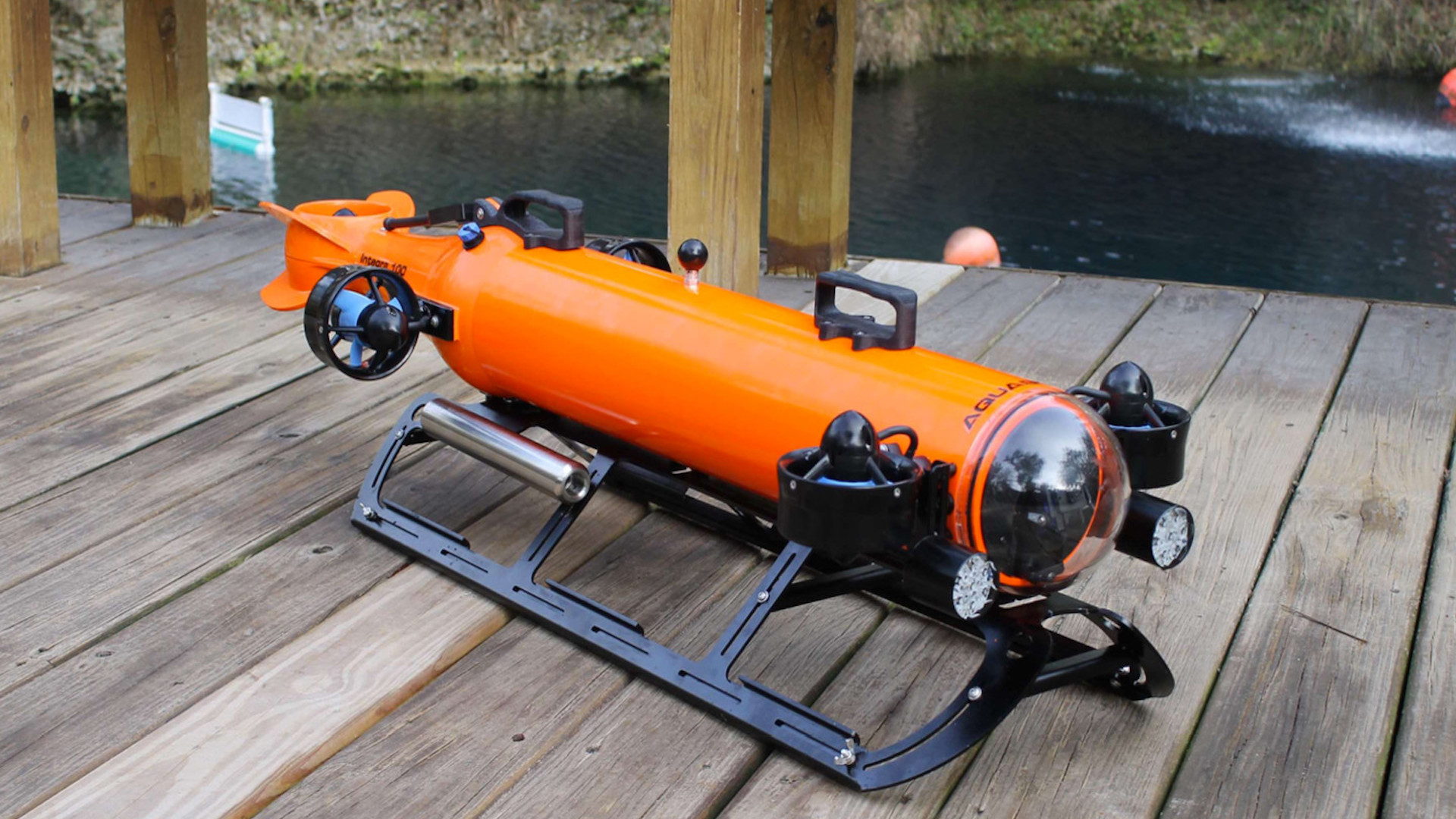

Aquabotix, a U.S.-based underwater drone manufacturer, just launched the second generation of its underwater Integra drone. This is a vehicle aimed squarely at industries such as search and rescue, law enforcement, and environmental missions. This remotely operated vehicle can either be steered directly, like any other drone or remotely from anywhere around the world. Make no mistake, though, the Integra can navigate the seas autonomously, too, when in autonomous underwater vehicle mode.
According to Business News, the Integra needs only to be told which areas are in-bounds regarding its autonomous maneuvers. Once those designations are set, there’s not much else that needs to be done, as the AUV whirs beneath the surface, assessing its surroundings. Of course, none of this would be of any functional use, were the drone not equipped with cameras or sensors. This Integra model sports a high-definition camera and sensors for temperature, depth, orientation, and GPS. The cherry on top is that all of the collected data from those sensors can be accessed through an online platform. In other words, you could simply take out your smartphone and log in to Aquabotix’s online portal and assess what your underwater colleague is up to.
Now, unfortunately, this ROV still requires a cable hooked to the remote when piloting it directly. It’d be far more impressive if the engineering were finally at a point where underwater drones could be operated without an umbilical cord, but we’re simply not there yet. On the other hand, being able to program a route or area for the Integra to explore from anywhere in the world, simply by logging into its portal, is pretty impressive. Then again, you’ll need someone to place the ROV into the water in the first place. As you can see, this seems like a mixed bag regarding convenience and functionality.
The company claims that this second generation model offers a plethora of new features. These include single-person functionality, full portability, battery-power, and cost-efficiency due to the Integra’s ability to complete multiple missions faster and cheaper than deploying multiple ROVs. However impressive battery-power or single-person functionality are as touted features is in the eye of the beholder, but it seems as though these are fairly expected functions, by now.
David Batista, Aquabotix CEO, however, is proud of the new model. He said, “With the Integra Hybrid AUV/ROV, we have added more functionality to a single vehicle. Because this vehicle has the brain power to conduct autonomous missions as well as detailed inspections in a single setting, operators have immediate and complete control.”
Ultimately, Batista is right. Just as drones have changed the landscape of inspections, search and rescue and environmental assessments on land, so will they in the oceans. Naturally, this hasn’t been as much of a priority as our land-based drone industry usage has been—after all, we need to get our tubes of toothpaste delivered aerially as soon as humanly possible. It is great to see the industry submerge itself into some of the environmental concerns of our oceans. Researchers can use this tool to assess the state of our coral reefs, oil and gas companies would be wise to use ROVs like these to inspect their pipelines more efficiently, and if drones like the Integra can help find missing persons adrift at sea more rapidly, it’s more than welcome here.